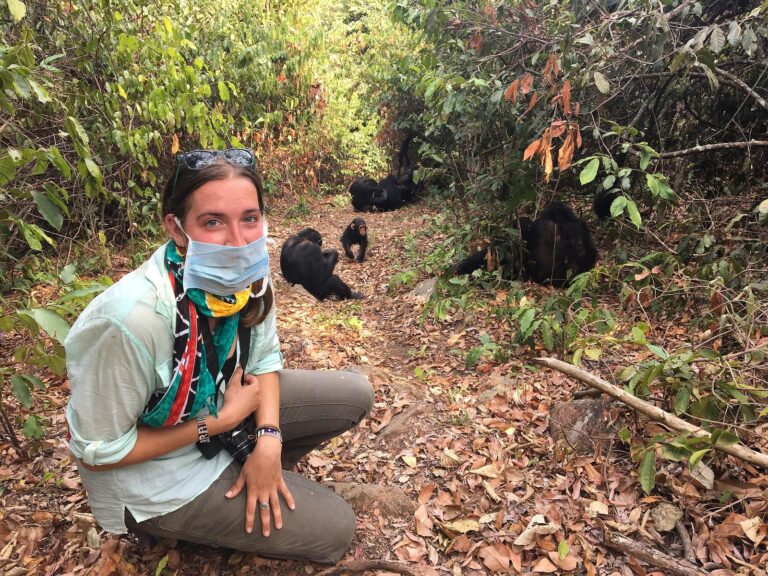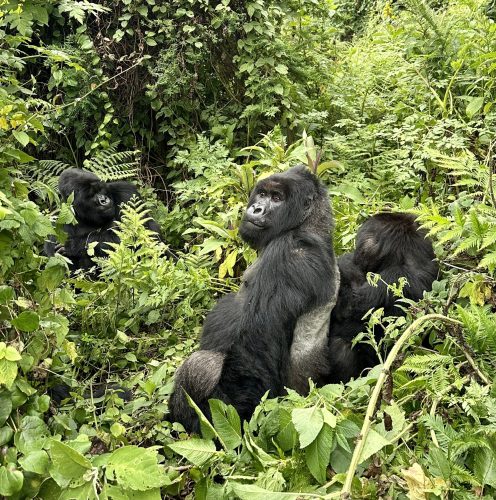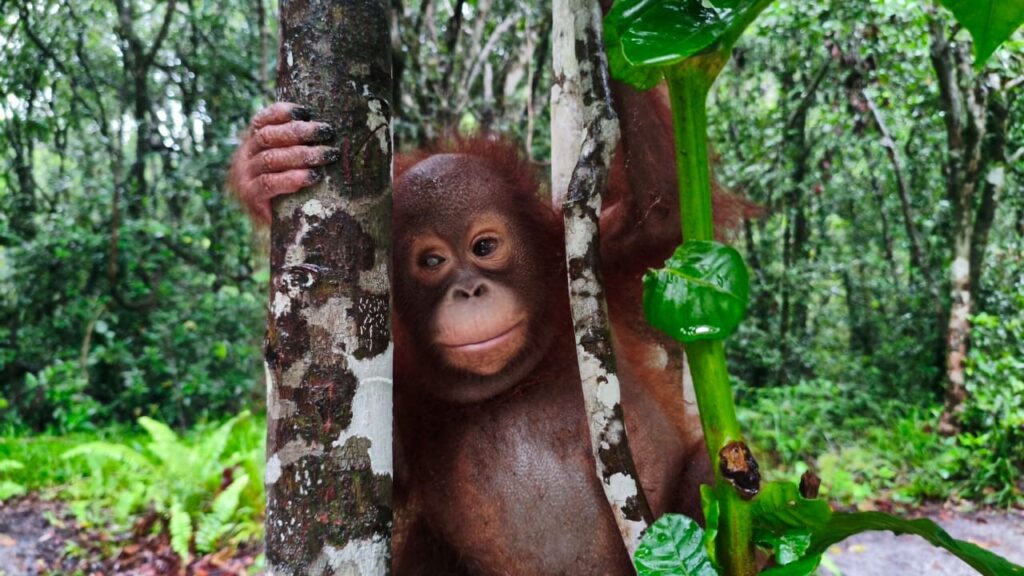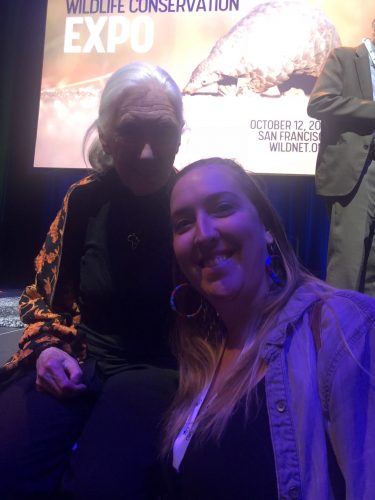By Clara Moore, Safari Specialist for The Wild Source
As an avid traveler and voracious reader, I love sharing books that inspire me, especially those connected to my work as a wildlife biologist. I’ve long been fascinated by Jane Goodall, Dian Fossey, and Biruté Galdikas, three pioneering scientists who defied expectations and made extraordinary contributions to our understanding of primates. At a time when few women were active in the field, they broke barriers, made groundbreaking discoveries, and devoted their lives to studying and protecting our closest living relatives.


My most recent read on this subject was Walking with the Great Apes: Jane Goodall, Dian Fossey, Biruté Galdikas by Sy Montgomery. In Walking with the Great Apes, acclaimed author and naturalist Sy Montgomery paints a vivid and deeply empathetic portrait of three of the most influential women in primatology. Montgomery, a respected author and naturalist, delves into the lives of these three remarkable women, exploring not just their scientific achievements, but also the personal decisions and inner convictions that drove them to pursue their research despite daunting obstacles: harsh environments, unstable funding, civil unrest, and physical danger. Yet through it all, their dedication never wavered. Where most people might have walked away, these women persevered—transforming hardship into purpose, and in the process, inspiring millions and advancing science in profound ways. These scientists not only transformed our understanding of chimpanzees, gorillas, and orangutans, but also revolutionized how humans relate to the natural world.

Their journeys were made possible in part by Louis Leakey, the renowned paleoanthropologist and archaeologist. Leakey believed that studying primates could illuminate the origins of humankind. He and his wife, Mary, made significant discoveries at Olduvai Gorge in Tanzania, unearthing some of the most important early human fossils ever found. Leakey was also ahead of his time in believing that women, with their different perspectives and approaches, might be uniquely suited to primate research. At a time when male scientists insisted on numbering their study subjects for objectivity, all three women, known affectionately as Leakey’s ‘Trimates’, broke convention by naming the animals they studied. This shift in approach allowed for a more relational, empathetic form of science—one that emphasized individuality and connection over detachment.

One of the most powerful themes in the book is the notion of connection—between scientist and subject, woman and wilderness. Rather than viewing primates through a detached, clinical lens, Goodall, Fossey, and Galdikas built relationships with the animals they studied. They gave them names instead of numbers, observed them patiently for years, and approached their research with empathy—an approach that was revolutionary and, at the time, frowned upon by the male-dominated scientific establishment. The book doesn’t shy away from their flaws—Fossey’s fierce protectiveness, Galdikas’s single-mindedness, Goodall’s unorthodox methods—but it presents these traits as part of the complexity that made their work so enduring. Montogomery handles their flaws with respect, showing how their courage and conviction far outweighed their imperfections.
As Montgomery writes: “The relationship that Jane Goodall has with the chimpanzees of Gombe—and that Dian Fossey had with the mountain gorillas she studied, and Biruté Galdikas has with the wild orangutans of Tanjung Puting—is different. There is a trust between human and animal, a privileged trust unlike any other. The contract for that trust is not written by the human: the animals are the authors of the agreement. The relationship is on the animals’ terms.”


Reading this book reminded me why I entered this field. It’s not always easy, and it rarely gets the recognition it deserves—but it matters. These women proved that one person’s quiet dedication can change not just scientific understanding, but global awareness and conservation policy. This is not just a story about science, it’s a story about passion, perseverance, and purpose. Walking with the Great Apes is inspiring and deeply human, offering a rare glimpse into the lives of three women who changed the world, one field observation at a time.

For those interested in diving deeper into the lives and work of these incredible scientists, I highly recommend the following:
Further Reading:
- My Life with the Chimpanzees – Jane Goodall
- Through a Window – Jane Goodall
- In the Shadow of Man – Jane Goodall
- Gorillas in the Mist – Dian Fossey
- Reflections of Eden – Biruté Galdikas
Explore the Places That Shaped the Trimate Legacy
If you’re inspired to experience the legacy of the Trimates in person, we offer journeys that take you into the very landscapes where their groundbreaking work unfolded:
- Ultimate Uganda – Trek with chimpanzees in Kibale Forest while directly supporting the Jane Goodall Institute’s conservation and community programs by staying at Kibale Lodge. The lodge supports the Jane Goodall Institute and its Roots and Shoots program, including the Institute’s training of young local guides, while offering guests enriching fireside talks with primatologists. Your journey also includes an unforgettable encounter with mountain gorillas in Bwindi.
- Rwanda Gorilla Trekking Extension – Explore Volcanoes National Park and enjoy two full-day treks to observe mountain gorillas up close in their natural habitat, with only eight visitors per group to ensure an intimate encounter. Additionally, an optional visit to the Dian Fossey Gorilla Fund offers a deeper glimpse into her legacy and conservation work.
These itineraries blend unforgettable wildlife experiences with meaningful conservation, allowing you to follow in the footsteps of Goodall and Fossey.